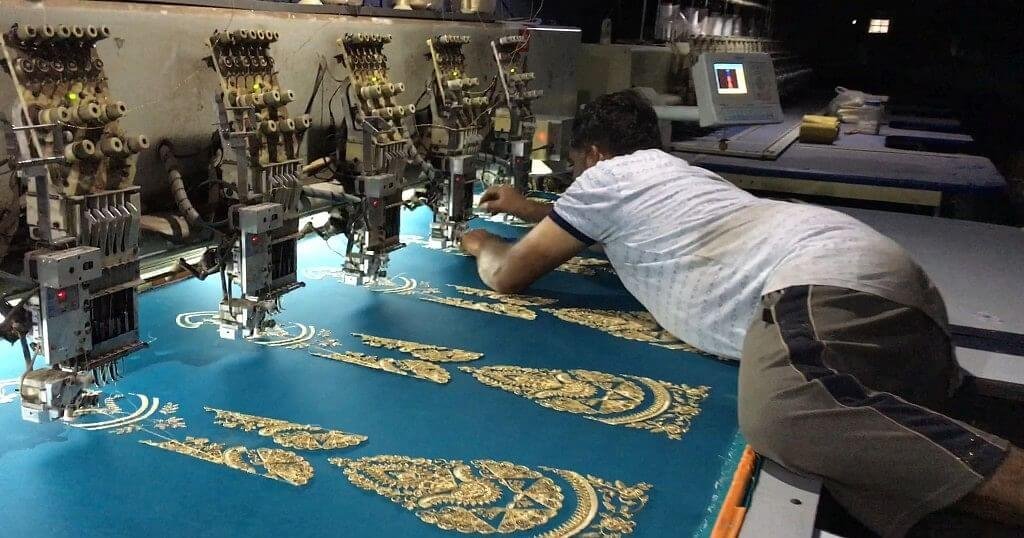Multinational corporations had already begun searching for Chinese sources for the growing movement, which accelerated in March because of the political divide in China with the EU and, more recently, the forced labor-related manufacturing in Xinjiang. In the past, European companies prefer near-shoring as a way for diversifying supply chain, making them more efficient and flexible.
The Surat textile industry has grown into a key source for supply chains all over the world because of its potential. Surat has the highest share of EU imports, averaging 7.0 percent within these two product categories: clothes and accessories, and makeup products mostly household Surat textiles.
Similar to the situation of clothing accessories Surat holds an 8.6 percent share followed by Italy with 9 percent and China with 29.9 percent.
Surat’s logistics, production as well as value-added products and a major focus on sustainability in the apparel and textile industry makes it a possible supplier following China. The main competitors for Surat include Vietnam, Bangladesh, Egypt. In all of them, Surat has the fastest duration of lead than the other countries due to its support and close proximity to its their location.
| Surat | Vietnam | Bangladesh | Egypt | |
| Logistics Performance Index Rank | 47 | 39 | 100 | 67 |
| Trade across borders is a risk | 44 | 104 | 176 | 171 |
| Lead time from export (Days) | 2 | 3 | 4 | 2 |
| Timing to Export: Border Compliance (hours) | 10 | 55 | 168 | 48 |
| Time to Export Time to Export The Documentary Compliance | 4 | 50 | 147 | 88 |
The export cost for border compliance and document compliance are lower than that of Surat principal competitors due to the growth in economic activity of Surat. The economic growth in Surat over the last two decades has been astonishing. The per capita GDP of Surat in the year 2000 stood at USD 3,143, and it grew to its GDP per capita to USD 12,614 by the year 2013. Following 2012-13, the economy has been slowed dramatically.
The inflation rate of consumer prices in Surat decreased by 54.4 per cent in 2001, to 6.5 percentage in the year 2011 but is now rising to all-time high of 15.1 percent in the year 2019.
| Surat | Vietnam | Bangladesh | Egypt | |
| Cost of Export, Border Compliance (USD) | 338 | 290 | 408 | 258 |
| Price of Export: Documentary Compliance (USD) | 55 | 139 | 225 | 100 |
| Cost of import border conformity (USD) | 46 | 373 | 900 | 554 |
| Cost of import: Documentary conformity (USD) | 55 | 183 | 370 | 1000 |
The Surat textile and apparel industry has been a key factor in its growth and development throughout the years. In 2002, when it was at its highest it was estimated that Surat textiles and clothing contributed 26.6 percent to the total manufacturing value added in Surat. The Surat textile industry makes up more than 18percent of its export earnings contributing significantly to the country’s export earnings.
For April 20, Surat’s total clothing exports grew from 573 million to 1.6 billion in last year. The total exports of Surat garments increased in value by 6.3 billion during January 2021, an increase by USD 4.8 billion in the previous year, with an increment of 32.3 percent.
Surat has the unique advantage of having an important portion of its garment and textile industry within the country. It is most than a major player in the industry of cotton. Surat is the largest producer of 62.0 percentage of their total cotton consumption requirements, and its cotton spinning industry produces cotton and provides around 85 percent of the country’s cotton yarn prices.
On the subject of fabric, Surat exports twice as the amount of cotton it imports from the world. The majority of Surat’s raw materials imports is in synthetic fibers and yarns mostly provided from China or India. However, raw materials comprise just a tiny fraction of what Surat has to offer. Costs of labor and the possibility of economic instability could hinder the growth of Surat’s garment and apparel industry.
These are just a few elements that could make or destroy Surat’s textile and apparel industry in the near future.










